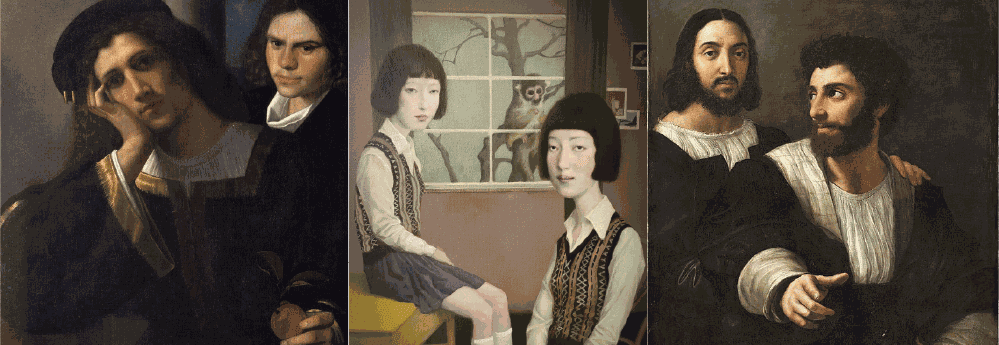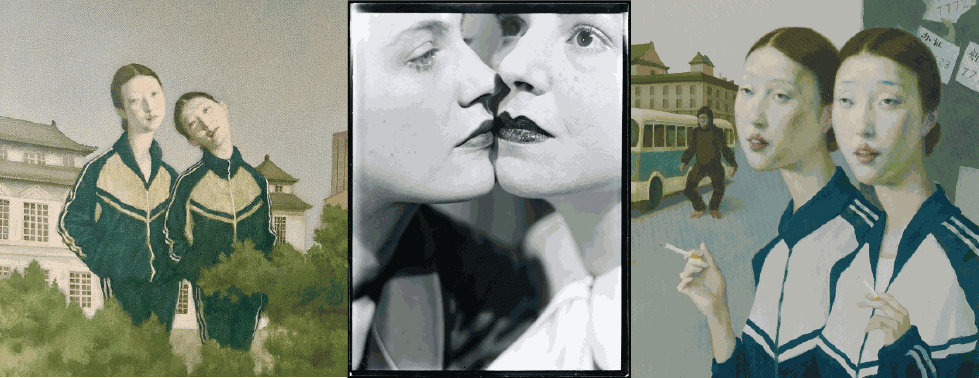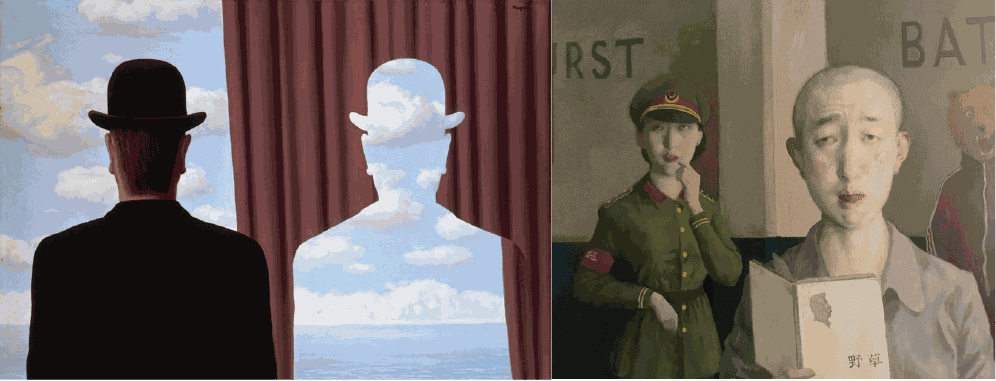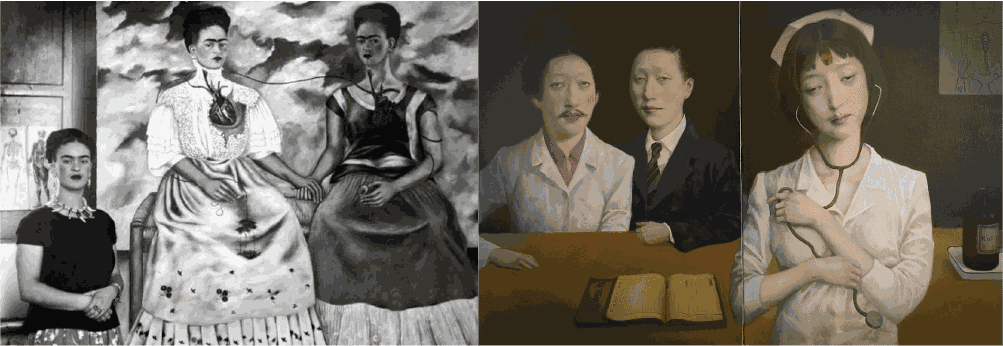
"I have always been interested in investigating in my work the relationship between people and history. Today, we live in an environment that brings together people from around the world with different ideologies, cultures, and backgrounds and in my opinion that mixture of individual and their pasts is in itself modernity and a crucial element in my work."
"The wedding portrait I include in my work is a traditional Chinese wedding photograph most often used in the past, particularly during my parents' time. I use this image as a symbol of nostalgia and include it in the background to support the narrative of the painting, as the wedding portrait becomes part of the story and reintegrates the element of the past; by using these visual elements, I can also highlight the feeling of confusion in human relationships."

"The Hotel Bedroom" by Lucien Freud has been a major inspiration for me as I explore the theme of human relationships in crisis. Through this painting, I have been able to see the powerful impact of visual art in representing the complexities and nuances of human interactions and emotions. The painting showcases the raw and unfiltered emotions of a couple in a moment of crisis, and I found it very inspiring to interpret this scene from my own perspective.
I am particularly drawn to the use of colors, brushstrokes and composition in the painting, which creates a sense of intimacy and vulnerability. The painting captures the subtle expressions and body language of the couple, which conveys the emotional turmoil they are experiencing.
I am using this masterpiece as a reference point to elaborate my own personal interpretation of the dialogue between husband and wife in a moment of crisis. I believe that this painting has the power to spark a deeper understanding and appreciation of the human experience, and I hope to achieve the same with my own work.

The echo of the double portrait travels from afar, taking on meanings and suggestions, from Giorgione to Lucien Freud. This echo, despite always wearing a different dress, comes strong, revealing the soul of the double dream story.
The theme of the double in history of art is a central concept in artistic culture, with roots that date back to antiquity and have evolved to the present day. In particular, analytical psychology has a deep connection with the theme of the double. According to Freud, the theme of the double represents the unconscious and the secret fears that inhabit the unconscious.
He identified the theme of the double as a source of inner conflict and ambivalence in everyday life. For example, his psychoanalytic theories of doubles have often been interpreted as an inner struggle, in which the forces of the unconscious clash with the forces of consciousness.
Some of the most important artistic representations of the double come from the Renaissance and were produced by artists such as Michelangelo and Leonardo da Vinci. Michelangelo painted one of the most famous images of the double in "The Fallen Angel" (1504-1505).
His image of the angel divided in two parts, with one part facing towards the sky and the other towards hell, has been interpreted as a symbol of the inner struggle between good and evil. Another famous Renaissance artist, Leonardo da Vinci, painted "The Vitruvian Man" (1490), which shows the man as a perfect example of balance between mind, body and spirit. In modern times, the theme of the double has been represented explicitly by artists such as Salvador Dalí, Man Ray and Max Ernst.
Dalí in particular used the theme of the double to express his ideas about the unconscious and reality in a very clear and direct way. Man Ray produced works that explore the duality of life and existence, while Max Ernst sought to capture the otherness of life.
About the author

Dorothy Circus Gallery









